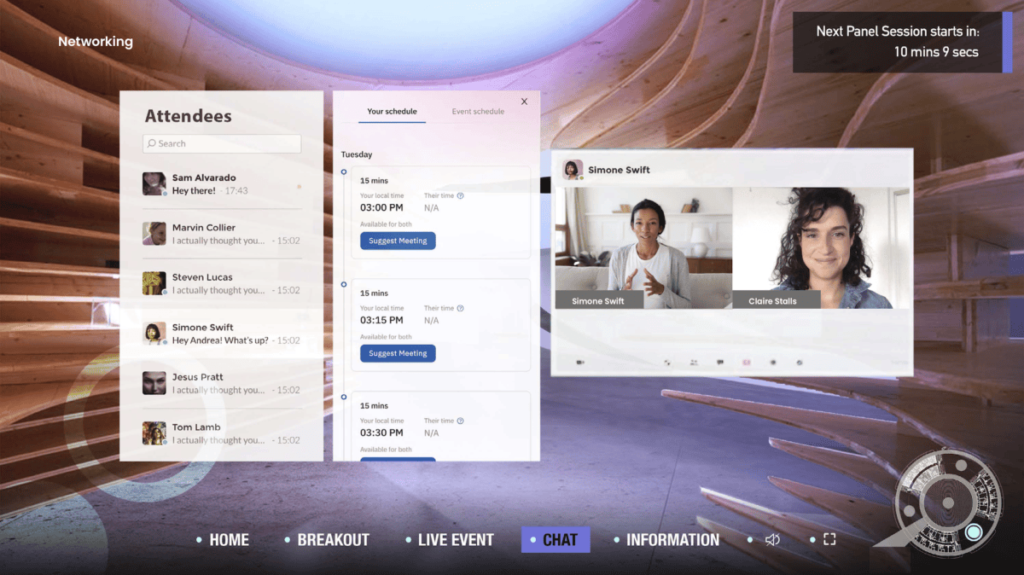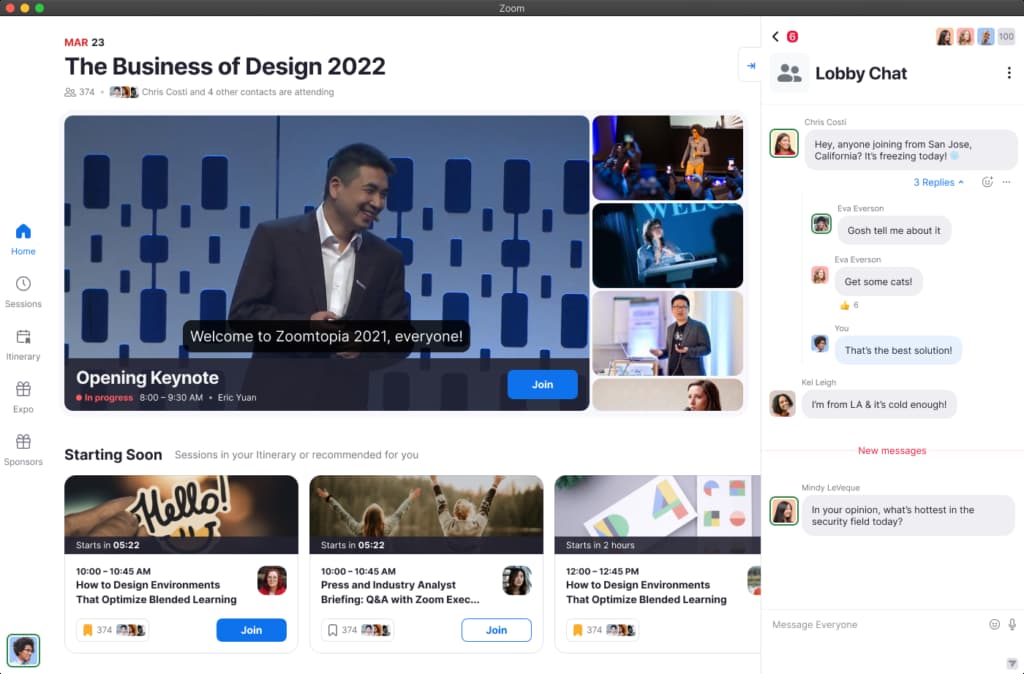In the wake of the transformative COVID-19 pandemic, the landscape of events has undergone a profound shift. From boardrooms to living rooms, the virtual realm has emerged as a powerful arena for connection, engagement, and innovation. In this comprehensive guide, authored by the insightful Sonia Urlando, we embark on a journey through the intricacies of virtual events.
Beyond the basics, we explore the strategic depths, creative dimensions, and technological landscapes that define the success of virtual gatherings. From reimagining fundraising to unlocking the potential of diverse event types, this guide is your compass in navigating the evolving world of virtual events. Join us as we unravel the strategies, ideas, and top platforms that propel organizations into a new era of seamless and impactful virtual experiences.
The Rise of Virtual Events in the Post-COVID Era

The COVID-19 pandemic, which swept across the globe in 2020, brought unprecedented challenges to how we connect and engage. As physical gatherings became fraught with health concerns, a seismic shift occurred, propelling the rise of virtual events. This chapter explores the profound impact of the pandemic on event dynamics and the subsequent surge in virtual experiences.
- Navigating Uncharted Waters. The onset of the pandemic prompted event organizers to swiftly adapt to the new normal. With uncertainties surrounding the timeline of the crisis, the pivot towards virtual events became not just a contingency plan but a strategic imperative. From corporate conferences to educational workshops, the virtual landscape became the uncharted waters where organizations sought to maintain continuity and connection;
- The Resilience of Virtual Platforms. Virtual events showcased their resilience and adaptability. They provided a lifeline for industries that heavily relied on physical interactions. While traditional events faced cancellations and uncertainties, virtual platforms emerged as beacons of continuity, enabling seamless transitions for scheduled gatherings. This resilience spoke to the transformative potential of virtual events in sustaining connections in times of crisis;
- Beyond Temporary Solutions. Initially perceived as temporary substitutes for in-person gatherings, virtual events evolved into integral components of organizational strategies. The benefits they offered — cost-effectiveness, wider audience reach, and enhanced engagement — led to a realization that virtual wasn’t merely a stopgap solution. It became a strategic avenue with its own set of advantages, challenging the conventional notion of events centered around physical presence;
- Unveiling Global Connectivity. One of the most significant shifts brought about by virtual events was the democratization of access. Geographical constraints crumbled as attendees from different corners of the world could participate with a click. The virtual stage erased boundaries, offering a global platform for knowledge-sharing, collaboration, and networking. As travel restrictions lingered, the appeal of reaching diverse audiences from the comfort of one’s home gained prominence;
- A Catalyst for Innovation. The limitations imposed by the pandemic became a catalyst for innovation within the virtual event space. Organizers, compelled to think beyond traditional formats, explored creative solutions to replicate the essence of live experiences. The emergence of interactive features, virtual trade shows, and gamified elements injected a fresh and engaging dimension into events, challenging preconceived notions about the limitations of the virtual realm.
The rise of virtual events in the post-COVID era is more than a response to a crisis; it’s a transformative force shaping the future of how we gather. The experiences and lessons learned during this period are poised to influence event strategies long after the pandemic subsides. As we navigate this chapter on the rise of virtual events, it becomes evident that we are witnessing not just a shift in circumstances but a fundamental evolution in the way we connect, share, and experience events.
Decoding Virtual Events: How They Work and Why They Work
As the curtain rises on the era of virtual events, the need to understand the mechanics behind their functioning becomes paramount. This chapter seeks to decode the intricacies of virtual events — unraveling how they work and, more importantly, why they work:
- The Virtual Event Platform: A Host’s Digital Stage. Virtual events operate on specialized platforms that serve as the digital stage for interactions. These platforms host a myriad of features, including live streaming capabilities, chat functionalities, and interactive tools. Participants access the event by registering beforehand, receiving unique links that grant them entry to the virtual venue;
- Participant Registration and Access Protocols. Unlike traditional events, virtual gatherings necessitate pre-registration. Attendees provide essential details during the registration process, facilitating a seamless integration into the virtual environment. Access protocols ensure a secure and controlled influx of participants;
- Virtual Event Types and Structures. The structure of virtual events varies based on their type — webinars, conferences, workshops, and more. While webinars typically involve presentations and Q&A sessions, conferences mimic the traditional event setup with multiple sessions, keynotes, and networking opportunities. Workshops delve into interactive learning, fostering engagement through virtual collaboration tools;
- The Role of Moderators and Hosts. Virtual events rely on skilled moderators and hosts who guide participants through the experience. They manage discussions, facilitate Q&A sessions, and ensure a smooth flow of the event.
The virtual environment demands a nuanced approach, balancing engagement and technical considerations.
The Hidden Advantages of Virtual Events
Virtual events have become increasingly popular, especially in the context of global events such as the COVID-19 pandemic. While there are some challenges associated with transitioning from in-person to virtual events, there are also hidden advantages that can make virtual events a valuable and effective alternative. Here are some of the hidden advantages of virtual events:
- Global Reach: Virtual events eliminate geographical barriers, allowing attendees from around the world to participate without the need for travel. This expands the reach of the event and enables a more diverse and inclusive audience;
- Cost Savings: Organizing virtual events can be more cost-effective compared to traditional in-person events. There are reduced expenses related to venue rentals, travel, accommodation, catering, and other logistical aspects, making it a budget-friendly option;
- Data Analytics: Virtual events provide organizers with valuable data and analytics that can be used to understand attendee behavior, engagement levels, and preferences. This data can inform future event planning and help optimize content for better audience interaction;
- Flexibility and Convenience: Attendees have the flexibility to participate in virtual events from the comfort of their homes or offices. This convenience can lead to increased attendance rates, as participants don’t need to factor in travel time or make significant schedule adjustments;
- Extended Event Lifespan: Virtual events often have a longer lifespan compared to in-person events. Recordings, presentations, and other content can be made available on-demand, allowing attendees to revisit or catch up on sessions they may have missed during the live event;
- Enhanced Networking Opportunities: Virtual events can leverage technology to facilitate networking in innovative ways. Features such as virtual breakout rooms, chat functionalities, and networking lounges can foster meaningful connections among attendees;
- Reduced Environmental Impact: With no need for travel or physical materials, virtual events contribute to a lower carbon footprint and reduced environmental impact. This aligns with the growing focus on sustainability and corporate social responsibility;
- Increased Accessibility: Virtual events can be more accessible to individuals with disabilities, as organizers can implement features like closed captioning, sign language interpretation, and other accommodations to ensure inclusivity;
- Quick Adaptability: Virtual events can be quickly adapted to changing circumstances. In the face of unexpected challenges, such as a pandemic or natural disaster, organizers can pivot to virtual formats more easily than reorganizing an in-person event;
- Innovative Engagement Tools: Virtual events often utilize interactive tools, such as polls, Q&A sessions, and gamification, to keep participants engaged. These tools can enhance the overall event experience and provide unique ways for sponsors and exhibitors to connect with attendees.
While virtual events may not replace the benefits of face-to-face interactions entirely, recognizing and leveraging these hidden advantages can help organizers create more engaging, accessible, and cost-effective events.
15 Ingenious Virtual Event Ideas

In the ever-evolving landscape of virtual interactions, the need for innovative and engaging virtual event ideas has become paramount. Whether you’re organizing a team-building exercise, a corporate conference, or a social gathering, infusing creativity into the digital space can elevate the experience for participants. In this article, we explore 15 ingenious virtual event ideas that go beyond the traditional webinar, sparking inspiration for organizers looking to captivate audiences and foster meaningful connections in the virtual realm.
- Virtual Escape Room. Host a virtual escape room where participants can solve puzzles and work together to “escape” within a set time. Use platforms like Zoom or dedicated escape room software for an interactive experience;
- Digital Scavenger Hunt. Create a digital scavenger hunt using online tools or platforms. Participants can search for clues or items within their own homes, and the first to complete the list wins a prize;
- Virtual Cooking Class. Organize a virtual cooking class with a professional chef or a talented home cook. Participants can follow along, ask questions, and enjoy a delicious meal together;
- Interactive Workshops. Offer engaging workshops on various topics like creativity, mindfulness, or team-building activities. Encourage participation through polls, Q&A sessions, and breakout discussions;
- Online Gaming Tournament. Host a virtual gaming tournament for popular multiplayer games. Whether it’s casual or competitive, it’s a fun way for participants to connect and compete;
- Virtual Talent Show. Allow participants to showcase their talents through a virtual talent show. From music performances to magic tricks, this idea adds a personal touch to the virtual event;
- Digital Caricature Artist. Hire a digital caricature artist to draw live portraits of attendees during the event. It’s a unique and entertaining way to create lasting memories;
- Live Virtual Tours. Arrange live virtual tours of interesting places or attractions. This could include museums, historical sites, or even virtual reality tours for an immersive experience;
- Fitness Challenges. Incorporate fitness challenges into your event, such as virtual yoga sessions, step challenges, or quick workout breaks led by a fitness instructor;
- Virtual Wine Tasting. Send participants a selection of wines in advance and host a virtual wine tasting with a knowledgeable sommelier. Participants can learn about different wines and enjoy the experience together;
- Customizable Avatars and Virtual Spaces. Create a virtual space where participants can customize their avatars and interact with each other. This adds a social element and can mimic the feeling of being at a physical event;
- Tech Demos and Product Launches. Showcase new products or technologies through live demonstrations, allowing participants to engage with the presenters and ask questions in real-time;
- Interactive Polls and Surveys. Use live polls and surveys throughout the event to gather feedback, opinions, and preferences from attendees. This can also be a way to make data collection more engaging;
- Celebrity or Industry Expert Q&A. Invite a well-known figure in your industry or a celebrity for a live Q&A session. Participants can submit questions and interact directly with the special guest;
- Themed Virtual Costume Party. Encourage participants to dress up according to a theme, and award prizes for the best costumes. Use virtual backgrounds or filters to enhance the theme during the event.
As we navigate the digital landscape, the power of creative virtual events has proven to be a catalyst for connection and engagement. The 15 ingenious ideas presented here demonstrate that virtual gatherings can transcend the limitations of physical distance, offering participants immersive and enjoyable experiences.
Spotlight on Virtual Event Platforms: 9 Top Picks

Virtual events have become the new normal, offering flexibility, convenience, and global reach. Choosing the right platform is crucial for a successful and engaging experience. Here are 9 top picks, each with its unique strengths:
- Zoom Events: A familiar video conferencing platform now offering dedicated event features like registration, live Q&A, breakout rooms, and analytics. Ideal for webinars, meetings, and small conferences;
- ON24: Robust platform with comprehensive features like interactive video, live polls, gamification, and real-time reporting. Best suited for large-scale conferences, product launches, and investor relations events;
- Hopin: User-friendly platform known for its customizable virtual venues, networking features like 1:1 video chat, and built-in social media integration. Great for conferences, trade shows, and career fairs;
- Remo: Immersive platform that simulates real-world networking with spatial audio and avatars. Attendees can “walk around” and interact with others in virtual booths and hallways. Perfect for networking events, meetups, and conferences with a strong focus on interaction;
- Vimeo Livestream: Powerful platform for live streaming events with professional production features like multi-camera switching, graphics overlays, and simulcasting to social media. Suitable for webinars, product demos, and live performances;
- Run The World: All-in-one platform designed specifically for virtual races and challenges. Features include GPS tracking, leaderboards, fundraising tools, and interactive courses. Ideal for organizing virtual marathons, cycling events, and fitness challenges;
- Airmeet: User-friendly platform with a focus on engagement and interactivity. Offers features like Q&A walls, polls, quizzes, and gamification elements. Good for conferences, training sessions, and workshops;
- Webex Events: Secure and reliable platform from Cisco, trusted by large enterprises. Offers all-in-one event management features, including registration, live streaming, on-demand playback, and analytics. Suitable for webinars, conferences, and training events;
- Swappit: Interactive platform that combines live video with shared slides and annotations. Ideal for collaborative brainstorming sessions, workshops, and virtual whiteboarding sessions.
Bonus:
- Gather: A newcomer platform gaining traction for its unique virtual world format and focus on attendee engagement.
Choosing the right platform depends on your specific needs and event type. Consider factors like:
- Event size and audience: How many attendees do you expect?;
- Event type: Conference, webinar, workshop, networking event?;
- Features required: Do you need live streaming, polls, breakout rooms, etc.?;
- Budget: Free, freemium, or paid subscription?
Research, compare, and try out demo versions before making your decision.
Conclusion
As we conclude this odyssey through the realm of virtual events, it becomes evident that this paradigm shift is not a fleeting trend but a transformative force shaping the future of gatherings. Sonia Urlando’s expertise has illuminated the strategic nuances, creative possibilities, and technological foundations that underpin successful virtual events. From innovative ideas to meticulous planning, and from top-tier platforms to member engagement strategies, this guide equips you with the tools to navigate the virtual landscape with confidence.
